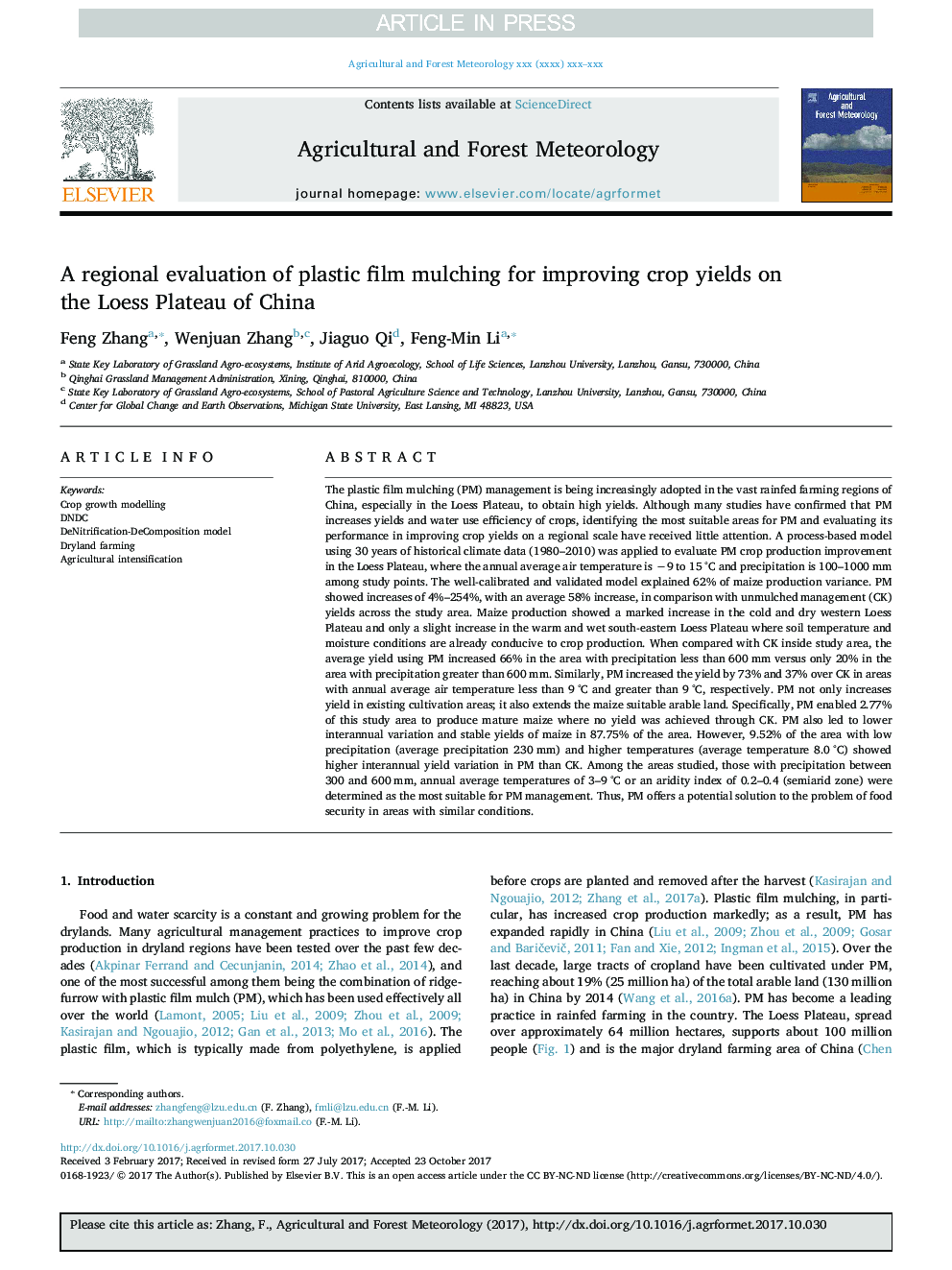| Article ID | Journal | Published Year | Pages | File Type |
|---|---|---|---|---|
| 6536895 | Agricultural and Forest Meteorology | 2018 | 11 Pages |
Abstract
The plastic film mulching (PM) management is being increasingly adopted in the vast rainfed farming regions of China, especially in the Loess Plateau, to obtain high yields. Although many studies have confirmed that PM increases yields and water use efficiency of crops, identifying the most suitable areas for PM and evaluating its performance in improving crop yields on a regional scale have received little attention. A process-based model using 30 years of historical climate data (1980-2010) was applied to evaluate PM crop production improvement in the Loess Plateau, where the annual average air temperature is â9 to 15â¯Â°C and precipitation is 100-1000â¯mm among study points. The well-calibrated and validated model explained 62% of maize production variance. PM showed increases of 4%-254%, with an average 58% increase, in comparison with unmulched management (CK) yields across the study area. Maize production showed a marked increase in the cold and dry western Loess Plateau and only a slight increase in the warm and wet south-eastern Loess Plateau where soil temperature and moisture conditions are already conducive to crop production. When compared with CK inside study area, the average yield using PM increased 66% in the area with precipitation less than 600â¯mm versus only 20% in the area with precipitation greater than 600â¯mm. Similarly, PM increased the yield by 73% and 37% over CK in areas with annual average air temperature less than 9â¯Â°C and greater than 9â¯Â°C, respectively. PM not only increases yield in existing cultivation areas; it also extends the maize suitable arable land. Specifically, PM enabled 2.77% of this study area to produce mature maize where no yield was achieved through CK. PM also led to lower interannual variation and stable yields of maize in 87.75% of the area. However, 9.52% of the area with low precipitation (average precipitation 230â¯mm) and higher temperatures (average temperature 8.0â¯Â°C) showed higher interannual yield variation in PM than CK. Among the areas studied, those with precipitation between 300 and 600â¯mm, annual average temperatures of 3-9â¯Â°C or an aridity index of 0.2-0.4 (semiarid zone) were determined as the most suitable for PM management. Thus, PM offers a potential solution to the problem of food security in areas with similar conditions.
Related Topics
Physical Sciences and Engineering
Earth and Planetary Sciences
Atmospheric Science
Authors
Feng Zhang, Wenjuan Zhang, Jiaguo Qi, Feng-Min Li,
